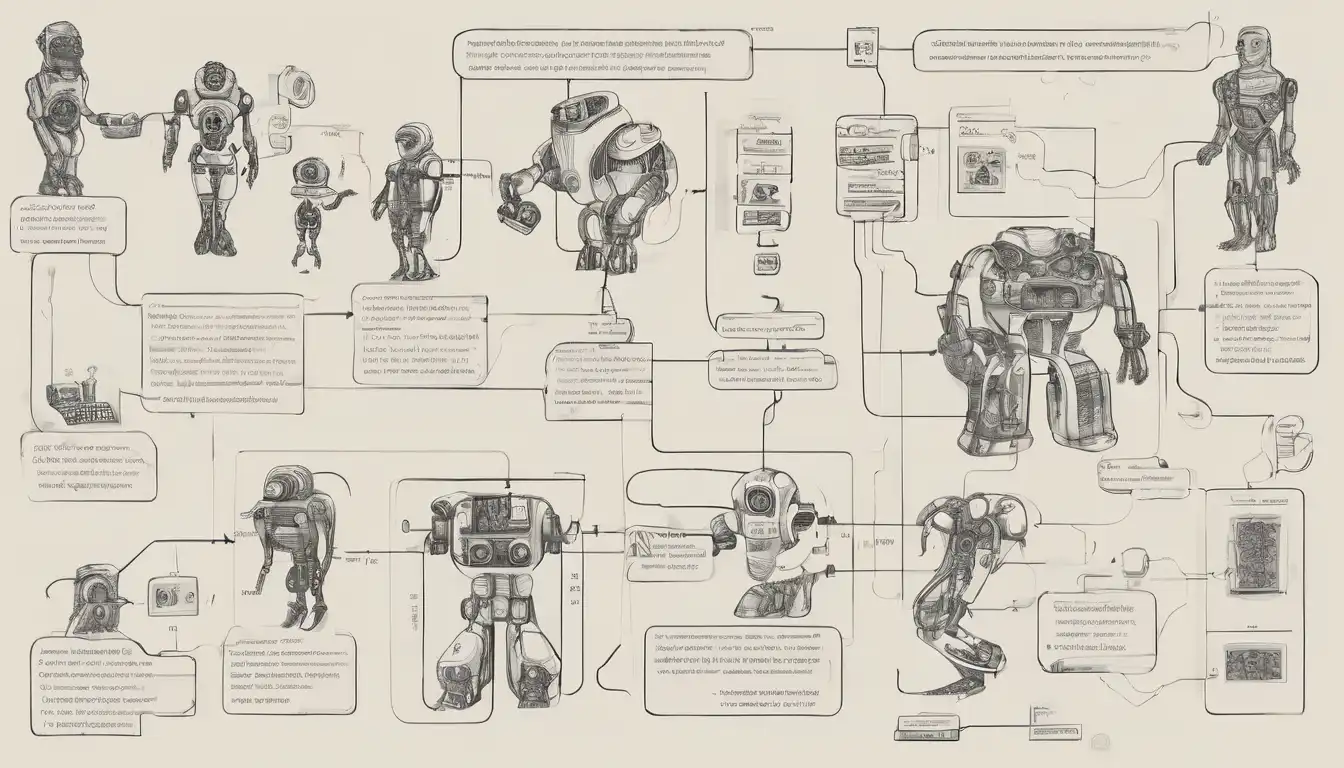Essential Machine Learning Algorithms Every Developer Must Master
In today's rapidly evolving technological landscape, machine learning has become an indispensable skill for developers across all domains. Whether you're building web applications, mobile apps, or enterprise software, understanding core machine learning algorithms can significantly enhance your capabilities and career prospects. This comprehensive guide covers the fundamental algorithms that every developer should have in their toolkit.
Why Machine Learning Matters for Developers
Machine learning is no longer confined to data science teams or AI research labs. Modern applications increasingly incorporate ML features for personalization, recommendation systems, fraud detection, and intelligent automation. As a developer, understanding these algorithms helps you make informed decisions about when and how to implement ML solutions, collaborate effectively with data scientists, and build more intelligent applications.
Supervised Learning Algorithms
Linear Regression
Linear regression is the foundation of predictive modeling and one of the first algorithms developers encounter. It establishes a linear relationship between input variables and a continuous output variable. This algorithm is perfect for forecasting, trend analysis, and understanding relationships between variables. For example, you might use linear regression to predict housing prices based on features like square footage, location, and number of bedrooms.
Logistic Regression
Despite its name, logistic regression is used for classification problems rather than regression. It's particularly effective for binary classification tasks like spam detection, customer churn prediction, or medical diagnosis. The algorithm calculates the probability that a given input point belongs to a certain class, making it interpretable and reliable for many real-world applications.
Decision Trees
Decision trees are intuitive, visual algorithms that mimic human decision-making processes. They work by splitting data into subsets based on feature values, creating a tree-like structure of decisions. Developers appreciate decision trees for their transparency and ease of interpretation. They're excellent for classification tasks and can handle both numerical and categorical data.
Random Forests
Random forests represent an ensemble approach that combines multiple decision trees to improve predictive accuracy and control overfitting. By creating numerous trees and averaging their predictions, random forests deliver robust performance across various domains. They're particularly valuable when you need high accuracy without extensive parameter tuning.
Support Vector Machines (SVM)
SVMs are powerful classifiers that work by finding the optimal hyperplane that separates classes in high-dimensional space. They're especially effective for complex classification problems with clear margins of separation. SVMs handle high-dimensional data well and are resistant to overfitting, making them popular in text classification and image recognition tasks.
Unsupervised Learning Algorithms
K-Means Clustering
K-means is the go-to algorithm for clustering tasks, where the goal is to group similar data points together without predefined labels. It's widely used in customer segmentation, document classification, and image compression. The algorithm works by iteratively assigning points to clusters and updating cluster centers until convergence.
Principal Component Analysis (PCA)
PCA is essential for dimensionality reduction, helping developers work with high-dimensional data more efficiently. By transforming correlated variables into a smaller set of uncorrelated components, PCA reduces computational complexity while preserving important patterns. This is crucial for visualization, noise reduction, and improving model performance.
Apriori Algorithm
The Apriori algorithm specializes in association rule learning, commonly used for market basket analysis. It identifies frequent itemsets and generates association rules that reveal relationships between variables. E-commerce platforms use this for recommendation engines, while developers apply it to understand user behavior patterns.
Neural Networks and Deep Learning
Artificial Neural Networks (ANN)
ANNs form the basis of deep learning, inspired by biological neural networks. They consist of interconnected nodes (neurons) organized in layers that process information through weighted connections. While basic ANNs handle various tasks, their true power emerges in complex pattern recognition and non-linear problems.
Convolutional Neural Networks (CNN)
CNNs revolutionized computer vision and are essential for any developer working with image data. Their specialized architecture includes convolutional layers that automatically learn spatial hierarchies of features. From facial recognition to medical imaging, CNNs deliver state-of-the-art performance in visual tasks.
Recurrent Neural Networks (RNN)
RNNs excel at processing sequential data, making them ideal for time series analysis, natural language processing, and speech recognition. Their internal memory allows them to maintain context across sequences, enabling applications like language translation, stock prediction, and chatbot development.
Reinforcement Learning Algorithms
Q-Learning
Q-learning is a fundamental reinforcement learning algorithm that enables agents to learn optimal actions through trial and error. It's particularly valuable for game development, robotics, and autonomous systems where an agent must learn to navigate environments and maximize rewards.
Deep Q-Networks (DQN)
DQN combines Q-learning with deep neural networks to handle complex, high-dimensional state spaces. This breakthrough enabled AI systems to master challenging games like Go and Atari classics, demonstrating the power of combining traditional RL with deep learning.
Choosing the Right Algorithm
Selecting the appropriate machine learning algorithm depends on several factors: the nature of your data, problem type (classification, regression, clustering), dataset size, computational resources, and interpretability requirements. Linear models work well for simple relationships, while ensemble methods and neural networks handle complex patterns. Always start with simpler algorithms and progress to more complex ones as needed.
Implementation Considerations for Developers
When implementing these algorithms, consider factors like data preprocessing, feature engineering, model evaluation, and deployment strategies. Libraries like Scikit-learn, TensorFlow, and PyTorch provide excellent implementations, but understanding the underlying mechanics ensures better troubleshooting and optimization.
Staying Current in Machine Learning
The field of machine learning evolves rapidly, with new algorithms and techniques emerging regularly. Developers should maintain continuous learning through online courses, research papers, and practical projects. Participating in Kaggle competitions and contributing to open-source ML projects can provide valuable hands-on experience.
Mastering these fundamental machine learning algorithms equips developers with the tools to build intelligent applications, solve complex problems, and stay competitive in the job market. While this overview covers the essentials, each algorithm deserves deep study and practical application to fully appreciate its capabilities and limitations.
